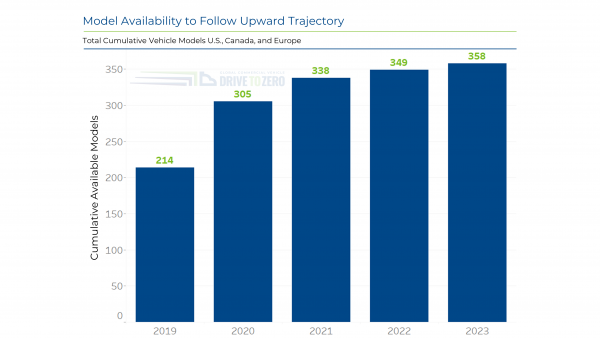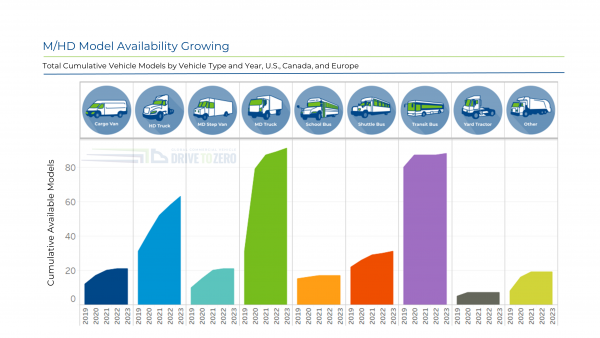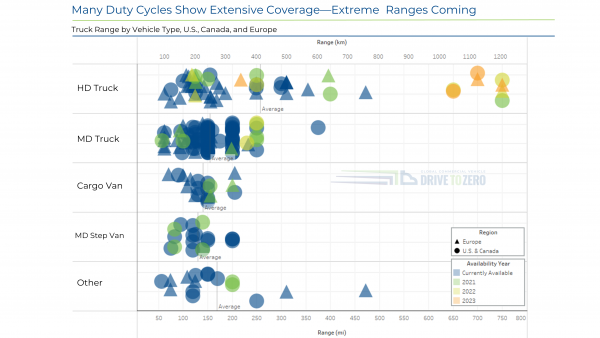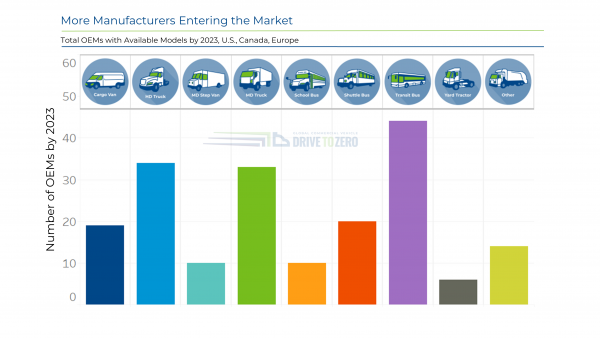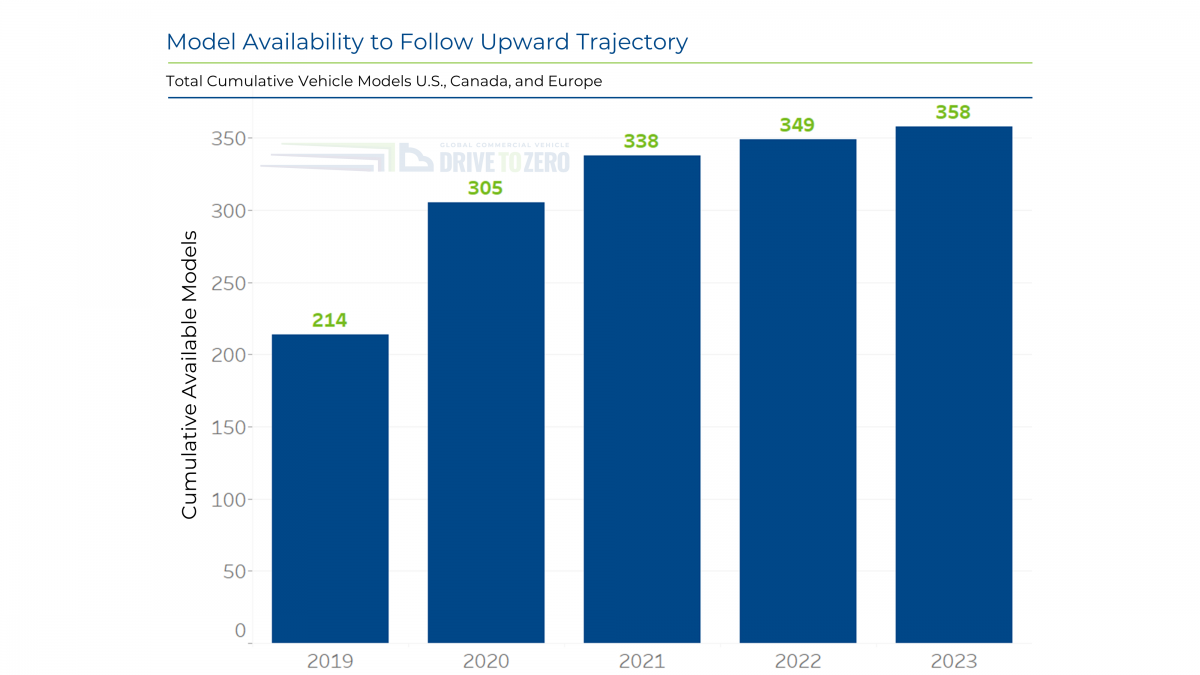
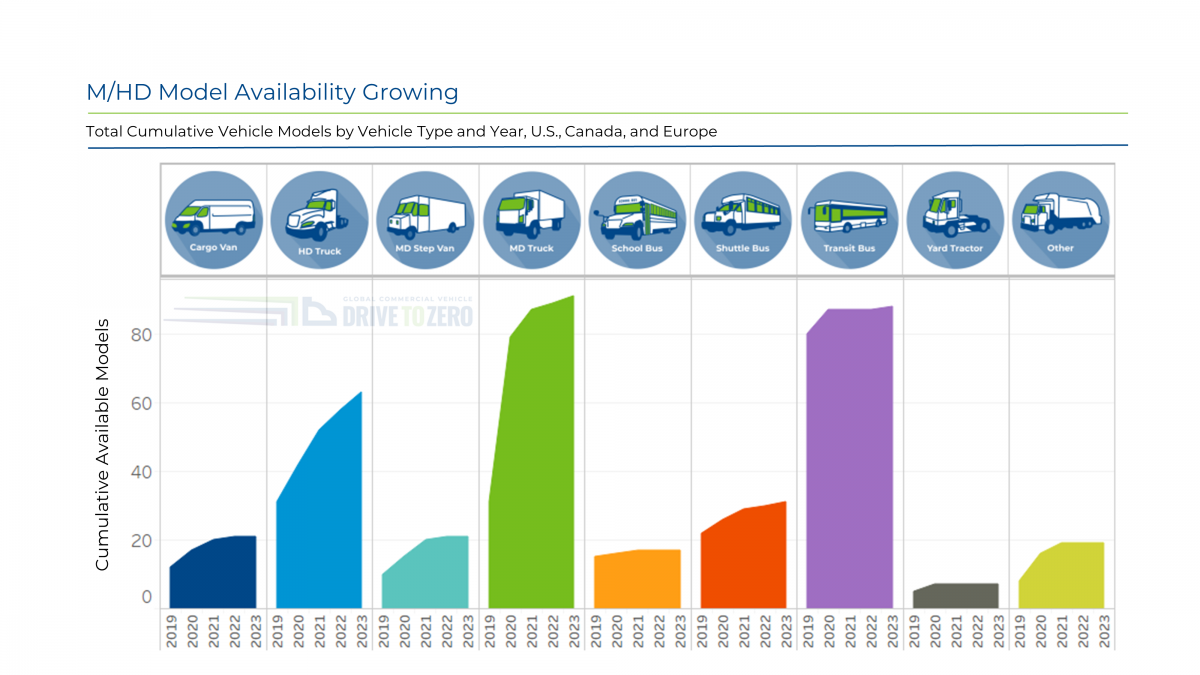

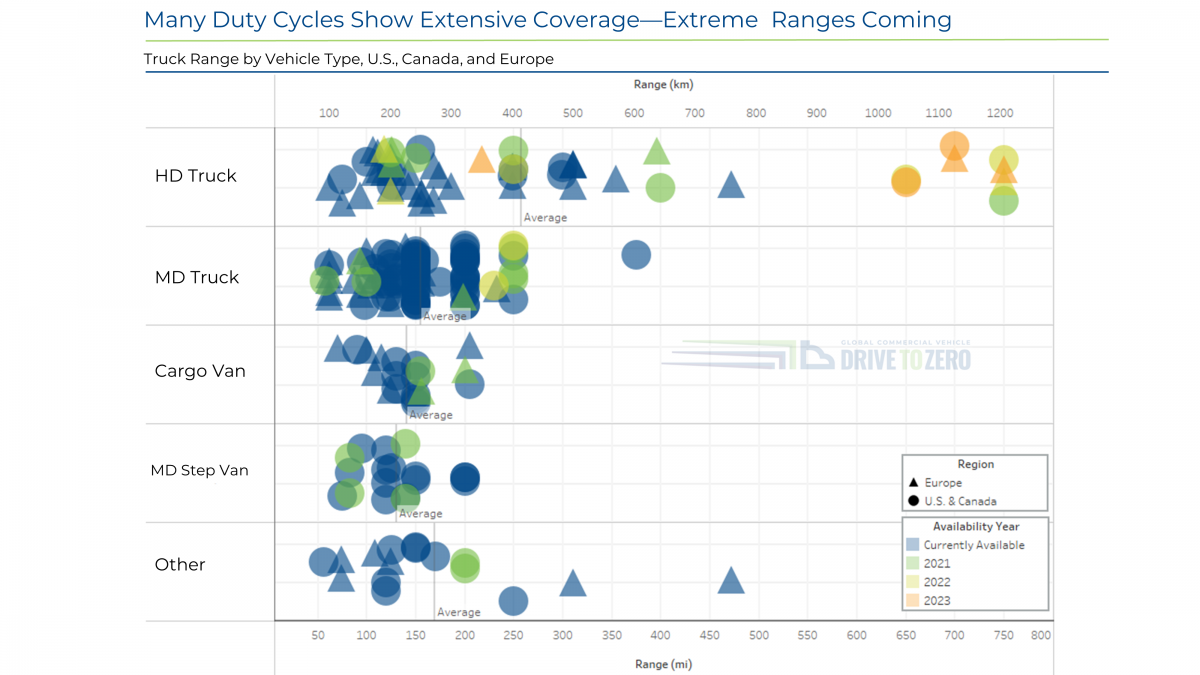
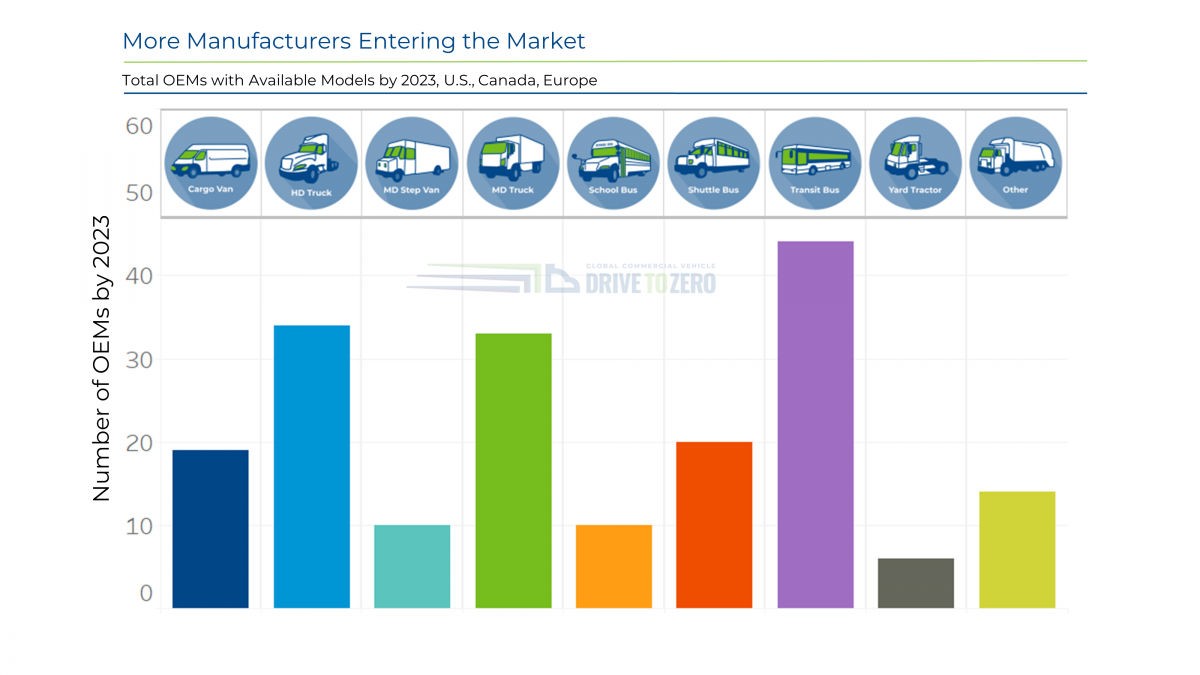
Zero-emission trucks and buses are surging in the United States, Canada, and Europe.
About the Results
The number of available and announced models of zero-emission (ZE) trucks and buses in the United States & Canada and Europe increased 42 percent from year-end 2019 to year-end 2020; that figure is expected to continue to grow significantly by 2023.
A mixture of market demand, policy drivers and an increasingly attractive business case are driving the North American model proliferation. Corporate giants like UPS, FedEx, IKEA and Amazon have made significant purchases, investments and/or commitments to zero-emission commercial vehicles in North America and beyond with large purchases from Rivian, Arrival and Chanje in recent months.
Regulations and incentive programs send clear market signals for manufacturers to prioritize leading-edge zero-emission technology. Market driving regulations and incentive programs include California’s Innovative Clean Transit Rule, Advanced Clean Truck Rule (ACT) and the Hybrid and Zero-Emission Truck and Bus Voucher Incentive Project (HVIP), as well as New York’s Truck Voucher Incentive Program and Quebec’s Ecocamionnage Program. In addition, Low Carbon Fuel Standard (LCFS) programs can generate credits to help accelerate payback periods for zero-emission powertrain systems in California, Oregon, and British Columbia. The national government of Canada is developing a LCFS to be applied in all provinces.
Infrastructure investments are also critical to drive market confidence. For example, California has more than $600 million in approved utility investment in “make-ready” infrastructure required to bring adequate service to medium- and heavy-duty EV charging sites.
Decreasing technology and electricity costs contribute to better cost parity and drive the increase in model availability. Battery pack prices fell 87 percent from $1,100/kWh in 2010 to $156/kWh in 2019, according to Bloomberg New Energy Finance. By 2023, BNEF projects prices will fall even lower to $100/kWh. In addition, electricity prices are significantly less volatile than petroleum prices allowing fleets to plan and account for future energy costs more accurately.
Strong growth is happening across most vehicle platforms – and 2020 marks a particularly strong uptick.
About the Results
Transit buses begin 2020 as the leading vehicle segment in terms of available models, consistent with the Drive to ZeroTM “beachhead strategy.” The beachhead strategy indicates that transit buses are considered a first-success application for zero-emission technology due to their shorter duty cycles and fixed route service with back-to-base operations making transit buses an easier technology to charge.
Medium-duty trucks boast the most models available on this timeline in North America and Canada, and also the fastest growth in 2020. This trend in North America is largely due to upfit manufacturers with versatile battery electric conversion kits they offer on a wide variety of body and chassis combinations.
Heavy-duty trucks show the most consistent growth through 2023. This segment’s production development timelines are longer and therefore full market viability will be stretched out over a few years.
Zero-emission buses across all sizes currently demonstrate driving range capabilities commensurate with user needs.
About the Results
Most ZE buses currently available can drive between 100-200 miles on a single charge, sufficient for most transit operations.
We find the greatest driving range in the 30-40+ ft segment, which includes the standard US transit bus size of 40 ft.
The lowest range vehicle is an autonomous unit built to serve college campuses and business parks.
Most bus models are already available or expected in early 2021. This high level of availability aligns with our assessment that the transit bus is a foundational technology and a logical first-success “beachhead” application for zero-emission commercial vehicles.
Zero-emission trucks across nearly all vehicle platforms currently demonstrate driving range capabilities commensurate with user needs.
About the Results
Most existing zero-emission trucks are able to drive 50-150 miles on a single charge, which is typically sufficient for urban deliveries and other fixed-route use cases.
There are multiple available options in each segment covering a range of duty cycles as well as many announced models through 2023.
The maximum average range available today tops out around 250 miles for HD trucks; at least 150 miles is possible in all predominantly on-road segments.
Longer ranges over 300 miles are coming in the next two-to-three years, including extreme ranges over 600 miles.
Companies like BYD, Volvo, Daimler, and Lion all leveraged leading zero-emission bus powertrain technology to aid commercialization for zero-emission truck platforms, which share much of the same core componentry, aligning with the technology transfer outlined in the “beachhead strategy”.
Diverse offerings are coming from a broad range of original equipment manufacturers, meaning an already competitive market will become increasingly more so in the next three-to-four years.
About the Results
Manufacturers are getting clear market and policy signals from leading edge regions that fleets want these vehicles and are progressively recognizing the opportunity that zero-emission commercial vehicle production can bring.
“Having sold well over 60,000 all-electric commercial vehicles worldwide, BYD is pleased to see CALSTART taking the lead in publicizing the breadth of medium- and heavy-duty electric vehicles currently available for sale in the US and across the globe,” said Stella Li, President of BYD Motors, Inc. “Electrifying commercial vehicles will continue to play a critical role in reducing the climate change and air quality impacts of the transportation sector; BYD is proud to support and partner with CALSTART in working towards that goal.
Interested in comparing past ZETI Analytics data? Visit the ZETI Analytics Archive.

